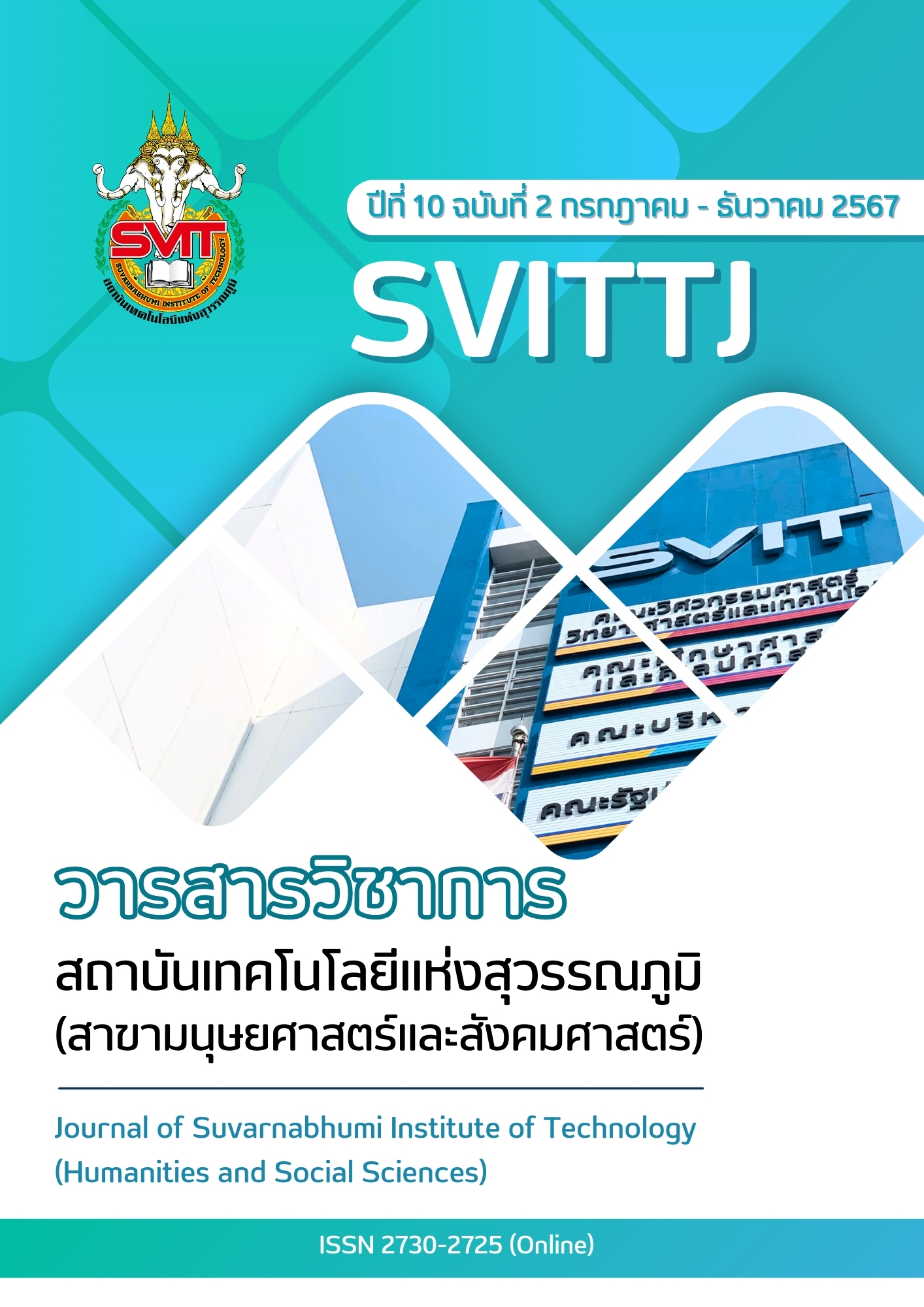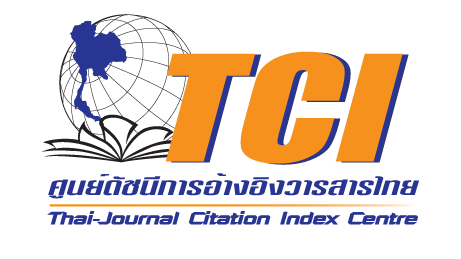THE IMPACTING FACTORS OF STUDENT PERFORMANCE IN APPLYING EXPERIENTIAL TEACHING METHODS TO PROMOTE LABOR EDUCATION AT VOCATIONAL COLLEGES IN CHENGDU, CHINA
Keywords:
Vocational Colleges, Experience Teaching, Behavioral Intention, Use Behavior, Student PerformanceAbstract
The study aims to delve into the influential factors of student performance in applying experiential teaching methods in vocational colleges in Chengdu, China. The research framework contains perceived ease of use, perceived usefulness, use attitude, social influence, use intention, convenience, use behavior, and student performance. Questionnaires and quantitative analysis were relied on to acquire sample data. Before it was dispersed, the questionnaire's validity and reliability were determined. Confirmatory factor analysis (CFA) and structural equation modelling (SEM) were used to verify the model's goodness of fit, confirm causality and influence degree among variables, and test hypotheses. By the study's results, the behavioral intention had the largest influence on use behavior, and use behavior substantially impacted students' performance.
References
Abo-Qudais, S. A., & Alhiary, A. (2007). Statistical models for traffic noise at signalized intersections. Building and Environment. 42(8), 2939-2948. https://doi.org/10.1016/j.buildenv.2005.05.040
Agudo-Peregrina, A. F., Iglesias-Pradas, S., Conde-González, M., & Hernández-García, A. (2014). Can we predict success from log data in VLEs? Classification of interactions for learning analytics and their relation with performance in VLE-supported F2F and online learning. Computers in Human Behavior, 31, 542-550. https://doi.org/10.1016/j.chb.2013.05.031
Ajzen, I. (1991). The theory of planned behavior. Organizational and Human Decision Processes, 50(2), 179-211. http://dx.doi.org/10.1016/0749-5978(91)90020-T
Alam, M. M., Sanchez-Azqueta, A., & Janha, O. (2019). Validation of the protein kinase PfCLK3 as a multistage cross-species malarial drug target. Science, 365(6456), 1-78. https://doi.org/10.1101/404459
Ali, F., Zhou, Y., Hussain, K., Nair, P. K., & Ragavan, N. A. (2016). Does Higher Education Service Quality Effect Student Satisfaction, Image, and Loyalty? A Study of International Students in Malaysian Public Universities. Quality Assurance in Education, 24, 70-94.
https://doi.org/10.1108/QAE-02-2014-0008
Anderson, J. C., & Gerbing, D. W. (1988). Structural equation modeling in practice: A review and recommended two-step approach. Psychological Bulletin, 103(3), 411–423. https://doi.org/10.1037/0033-2909.103.3.411
Arbuckle, J. L. (1995). AMOS for Windows Analysis of Moment Structures (1st ed.). Version 3.5. Chicago: Small Waters Corp.
Avci, U., & Askar, P. (2012). The Comparison of the Opinions of the University Students on the Usage of Blog and Wiki for Their Courses. Journal of Educational Technology & Society, 15(2), 1176-3647.
Bagozzi, R., & Yi, Y. (1988). On the Evaluation of Structural Equation Models. Journal of the Academy of Marketing Sciences, 16, 74-94. http://dx.doi.org/10.1007/BF02723327
Boateng, H., Adam, D., Okoe, A., & Anning-Dorson, T. (2016). Assessing the determinants of internet banking adoption intentions: A social cognitive theory perspective. Computers in Human Behavior, 65, 468-478. https://doi.org/10.1016/j.chb.2016.09.017
Çelik, H., & Yilmaz, V. (2011). Extending the technology acceptance model for adoption of e-shopping by consumers in Turkey. Journal of Electronic Commerce Research, 12(2), 152-164.
Çelik, S. (2008). Opening the door: An investigation of mother tongue use in foreign language classrooms. Hacettepe University Journal of Education, 34(1), 75-85.
Chan, S.-C., & Lu, M. T. (2006). Understanding Internet Banking Adoption and Use Behavior: A Hong Kong Perspective. Journal of Global Information Management,12(3), 21-43. https://doi.org/10.4018/jgim.2004070102
Chauhan, S., & Jaiswal, M. (2016). Determinants of acceptance of ERP software training in business schools: empirical investigation using UTAUT model. The International Journal of Management Education, 14(3), 248-262. http://dx.doi.org/10.1016/j.ijme.2016.05.005
Chen, H., & Tseng, H. (2012). Factors That Influence Acceptance of Web-Based e-Learning Systems for the In-Service Education of Junior High School Teachers in Taiwan. Evaluation and Program Planning, 35, 398-406. https://doi.org/10.1016/j.evalprogplan.2011.11.007
Chen, J., Del Genio, A. D., Carlson, B. E., & Bosilovich, M. G. (2008). The spatiotemporal structure of twentieth-century climate variations in observations and reanalyzes. Part I: Long-term trend. J. Climate, 21(11), 2611-2633. https://doi.org/10.1175/2007jcli2011.1
Chennamaneni, A., Teng, J., & Raja, M. (2012). A unified model of knowledge sharing behaviors: Theoretical development and empirical test. Behavior & Information Technology, 31(11), 1097-1115. https://doi.org/10.1080/0144929x.2011.624637
Cohen, S., & Wills, T. A. (1985). Stress, social support, and the buffering hypothesis. Psychological Bulletin, 98(2), 310–357. https://doi.org/10.1037/0033-2909.98.2.310
Davis, F. D. (1989). Perceived usefulness, perceived ease of use, and user acceptance of information technology. MIS Quarterly, 13(3), 319-340. https://doi.org/10.2307/249008
Deng, Y., Lei, M., Zhang, W., Li, W., Zhou, E., Liu, Z., & Qi, C. (2011). Monoclonal antibodies directed against Fpr3 protein as molecular chaperones. Hybridoma (Larchmt), 30(5), 491-493. https://doi.org/10.1089/hyb.2011.0053
Farooq, R. (2018). A conceptual model of knowledge sharing. International Journal of Innovation Science, 10(2), 238-260. https://doi.org/10.1108/ijis-09-2017-008
Fornell, C., & Larcker, D. F. (1981). Structural Equation Models with Unobservable Variables and Measurement Error: Algebra and Statistics. Journal of Marketing Research, 18, 382-388.
http://dx.doi.org/10.2307/3150980
Hair, J. F., Black, W. C., Babin, B. J., & Anderson, R. E. (2010). Multivariate data analysis (7th ed.). Prentice-Hall.
Hopwood, C. J., & Donnellan, M. B. (2010). How should the internal structure of personality inventories be evaluated? Personality and Social Psychology Review, 14(3), 332–346. https://doi.org/10.1177/1088868310361240
Hu, J., & Zhang, Y. (2016). Chinese students’ behavior intention to use mobile library apps and effects of education level and discipline, Library Hi Tech, 34(4), 639-656. https://doi.org/10.1108/lht-06-2016-0061
Hua, G., & Haughton, D. (2009). Virtual worlds adoption: A research framework and empirical study. Online Information Review, 33(5), 889-900. https://doi.org/10.1108/14684520911001891
Hubert, M., Blut, M., Brock, C., Backhaus, C., & Eberhardt, T. (2017). Acceptance of smartphone-based mobile shopping: mobile benefits, customer characteristics, perceived risks, and the impact of application context. Psychology & Marketing, 34(2), 175-194. http://dx.doi.org/10.1002/mar.20982
Idorenyin, I., Ukut, T., & Krairit, D. (2018). Justifying students’ performance, A comparative study of both ICT students’ and instructors’ perspective. Interactive Technology and Smart Education, 16(1), 18-35. https://doi.org/10.1108/ITSE-05-2018-0028
Isaac, W., Felix, N. K., Tettey, T., Ferdinand, A. K., & Abdulai, J.-D. (2018). Factors that affect acceptance and use of information systems within the Maritime industry in developing countries The case of Ghana. Journal of Systems and Information Technology, 22(1), 21-45. https://doi.org/10.1108/jsit-06-2018-0091
Joo, Y. J., Lim, K. Y., & Kim, N. H. (2016). The effects of secondary teachers’ technostress on the intention to use technology in South Korea. Computers & Education, 95, 114–122. https://doi.org/10.1016/j.compedu.2015.12.004
Judge, T. A., Piccolo, R. F., Podsakoff, N. P., & Rich, B. L. (2010). The relationship between pay and job satisfaction: A meta-analysis of the literature. Journal of Vocational Behavior, 77(2), 157-167.
Killingsworth, S. S., Clark, D. B., & Tanner-Smith, E. E. (2016). Digital Games, Design, and Learning: A Systematic Review and Meta-Analysis. Rev Educ Res, 86(1), 79-122. https://doi.org/10.3102/0034654315582065
Lau, S. H., & Woods, P. C. (2008). An empirical study of learning object acceptance in multimedia learning environment. Communications of the IBIMA, 5(1), 1-6.
Lee, M. (2009). Factors influencing the adoption of internet banking: an integration of TAM and TPB with perceived risk and perceived benefit. Electronic Commerce Research and Applications, 8(3), 130-141. http://dx.doi.org/10.1016/j.elerap.2008.11.006
Lee, M. D. P. (2008). A Review of the Theories of Corporate Social Responsibility: Its Evolutionary Path and the Road Ahead. International Journal of Management Reviews, 10, 53-73. https://doi.org/10.1111/j.1468-2370.2007.00226.x
Lin, L. (2013). Multiple dimensions of multitasking phenomenon. International Journal of Technology and Human Interaction, 9(1), 37-49. https://doi.org/10.4018/jthi.2013010103
Liu, H. (2020). Practical course of labor education in vocational colleges (1st ed.). Liaoning People’s Publishing House in Shenyang.
Maldonado, J. L., Zamiri, S., & Bauer, S. (2009). High Diffraction Efficiency at Low Electric Field in Photorefractive Polymers Doped with Arylimine Chromophores. Journal of Physics D: Applied Physics, 42, 1-10.
http://dx.doi.org/10.1088/0022-3727/42/7/075102
Mehlinger, H. D., & Powers, S. M. (2002). Technology and teacher education: A guide for educators and policy makers (1st ed.). Houghton Mifflin Company.
Moraes, P., & Falcade, A. (2015). The Lauraceous Collections of Carl Friedrich Philipp Von Martius in the Flora brasiliensis. Harvard Papers in Botany, 20(2), 167-197. https://doi.org/10.3100/hpib.v20iss2.2015.n7
Park, H., & Kim, Y.-K. (2014). The role of social network websites in the consumer–brand relationship. Journal of Retailing and Consumer Services, 21(4), 460-467. https://doi.org/10.1016/j.jretconser.2014.03.011
Peterson, R. A., & Kim, Y. (2013). On the relationship between coefficient alpha and composite reliability. Journal of Applied Psychology, 98(1), 194–198. https://doi.org/10.1037/a0030767
Raman, A. P., Anoma, M. A., Zhu, L., Eden, R., & Fan, S. (2014). Passive radiative cooling below ambient air temperature under direct sunlight. Nature, 515(7528), 540–544. https://doi.org/10.1038/nature13883
Samsudeen, S. N., & Mohamed, R. (2019). University students' intention to use e-learning systems A study of higher educational institutions in Sri Lanka. Interactive Technology and Smart Education, 16(3), 219-238. http://dx.doi.org/10.1108/ITSE-11-2018-0092
Sanchez, R. A., & Hueros, A. D. (2010). Motivational Factors that Influence the Acceptance of Moodle Using TAM. Computers in Human Behavior, 26, 1632-1640.
http://dx.doi.org/10.1016/j.chb.2010.06.011
Schaubroeck, J. M., Shen, Y., & Chong, S. (2017). A dual-stage moderated mediation model linking authoritarian leadership to follower outcomes. Journal of Applied Psychology, 102(2), 203–214. https://doi.org/10.1037/apl0000165
Schermelleh-Engel, K., Moosbrugger, H., & Müller, H. (2003). Evaluating the Fit of Structural Equation Models: Tests of Significance and Descriptive Goodness-of-Fit Measures. Methods of Psychological Research, 8(2), 23–74.
Schrum, L. (1999). Technology professional development for teachers. Educational Technology Research and Development, 47(4), 83-90. https://doi.org/10.1007/bf02299599
Tang, L. C., & Seng, C. (2016). Factors influence students' choice of accounting major in Cambodian universities. Asian Review of Accounting, 24(2), 1-10. https://doi.org/10.1108/ARA-04-2014-0049
Tarhini, A., Hassouna, M., Abbasi, M. S., & Orozco, J. (2015). Towards the Acceptance of RSS to Support Learning: An empirical study to validate the Technology Acceptance Model in Lebanon. Electronic Journal of e-Learning, 13(1), 1-12.
Teo, T. (2013). Initial Development and Validation of a Digital Natives Assessment Scale (DNAS). Computers & Education, 67, 51-57. https://doi.org/10.1016/j.compedu.2013.02.012
Teo, T. S., & Yeong, Y. D. (2003). Assessing the Consumer Decision Process in the Digital Marketplace. Omega, 31, 349-363. https://doi.org/10.1016/S0305-0483(03)00055-0
Teo, T. S. H., Ranganathan, C., & Dhaliwal, J. (2006). Key dimensions of inhibitors for the deployment of web-based business-to-business electronic commerce. IEEE Transactions on Engineering Management, 53(3), 395–411. https://doi.org/10.1109/tem.2006.878106
Timothy, A. J., Piccolo, R. F., Podsakoff, N. P., Shaw, J. C., & Rich, B. L. (2010). The relationship between pay and job satisfaction: A meta-analysis of the literature. Journal of Vocational Behavior, 77(2), 157-167.
Venkatesh, V., & Davis, F. (2000). A Theoretical Extension of the Technology Acceptance Model: Four Longitudinal Field Studies. Management Science, 46(2), 186-204. https://doi.org/10.1287/mnsc.46.2.186.11926
Venkatesh, V., Morris, M. G., Davis, G. B., & Davis, F. D. (2003). User acceptance of information technology: toward a unified view, MIS Quarterly, 27(3), 425-478. http://dx.doi.org/10.2307/30036540
Wang, X. (2019). A Study on College Students' View of Labor and Its Education. North University of China in Shanxi, 1(2), 8-12.
Wheaton, B., Muthen, B., Alwin, D. F., & Summers, G. (1977). Assessing Reliability and Stability in Panel Models. Sociological Methodology, 8, 84-136. http://dx.doi.org/10.2307/270754
Yang, Y. (2020). The Application of Experiential Teaching Method in Nursing Specialty Teaching, Advances in Social Science. Education and Humanities Research, 416, 1045-1047.
Downloads
Published
Issue
Section
License
Copyright (c) 2024 Suvarnabhumi Institute of Technology

This work is licensed under a Creative Commons Attribution-NonCommercial-NoDerivatives 4.0 International License.
บทความที่ได้รับการตีพิมพ์เป็นลิขสิทธิ์ของวารสารวิชาการ สถาบันเทคโนโลยีแห่งสุวรรณภูมิ
ข้อความที่ปรากฏในบทความแต่ละเรื่องในวารสารวิชาการเล่มนี้เป็นความคิดเห็นส่วนตัวของผู้เขียนแต่ละท่านไม่เกี่ยวข้องกับสถาบันเทคโนโลยีแห่งสุวรรณภูมิ และคณาจารย์ท่านอื่นๆในสถาบันฯ แต่อย่างใด ความรับผิดชอบองค์ประกอบทั้งหมดของบทความแต่ละเรื่องเป็นของผู้เขียนแต่ละท่าน หากมีความผิดพลาดใดๆ ผู้เขียนแต่ละท่านจะรับผิดชอบบทความของตนเองแต่ผู้เดียว





